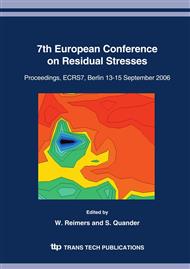p.291
p.299
p.305
p.311
p.317
p.323
p.331
p.337
p.343
Influence of Heat Treatment and Grinding Conditions on Surface Residual Stresses in the Production of Rollers
Abstract:
The aim of this study is to investigate surface residual stresses after heat treatment and grinding processes in the production of rollers. The residual stresses were measured using the X-ray diffraction method utilizing chromium radiation, which has an average penetration depth of 5 μm incident on AISI-E52100 (100Cr6) ball bearing steel. Taguchi design of experiments (DOE) is applied to define the set of experiments for grinding, which facilitates evaluation of the individual influences of process parameters on residual stresses and also eliminates unnecessary experiments. Response of residual stresses to each parameter is evaluated with the help of the results of residual stress measurements by X-ray diffraction. In grinding with aluminum oxide wheels, it was concluded that the lower the cutting speed and the higher the workpiece speed the higher the magnitude of surface compressive residual stresses. Higher compressive stresses were measured in axial direction compared to the circumferential direction after the grinding process.
Info:
Periodical:
Pages:
317-322
Citation:
Online since:
September 2006
Authors:
Keywords:
Price:
Сopyright:
© 2006 Trans Tech Publications Ltd. All Rights Reserved
Share:
Citation:


